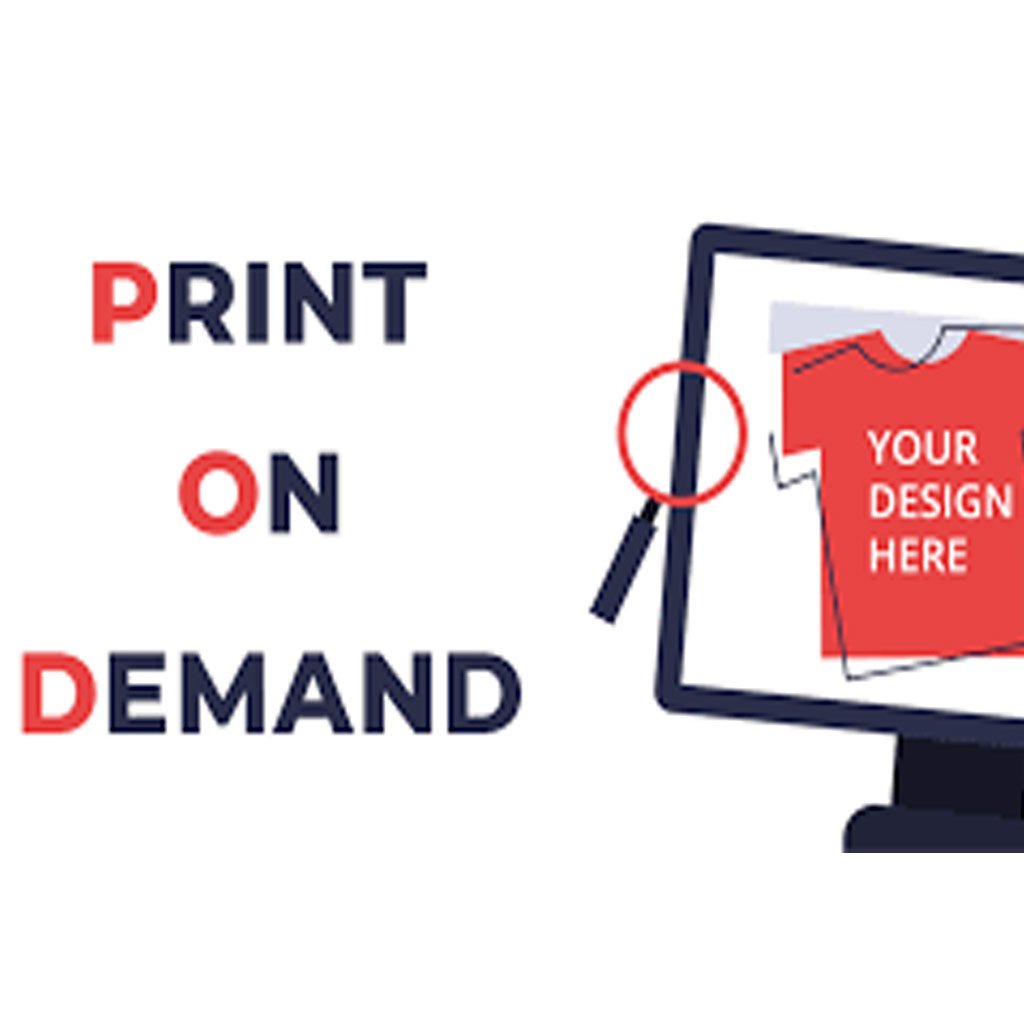Marketing Your Print-on-Demand Products: Strategies and Tactics
The print-on-demand (POD) business model has revolutionized the way entrepreneurs and small businesses sell products. With no need for inventory or upfront investment in bulk production, POD allows individuals to design and sell custom products with ease. However, success in the POD market hinges not only on the uniqueness and quality of the products but also on effective marketing strategies and tactics. This comprehensive guide explores various marketing strategies and tactics to help you successfully market your print-on-demand products.
Understanding Print-on-Demand
Print-on-demand is a business model where products are printed only when an order is placed. This approach minimizes risk and investment, making it an attractive option for creative entrepreneurs. Common POD products include t-shirts, hoodies, mugs, phone cases, posters, and more. Major POD platforms like Printful, Teespring, and Redbubble provide the infrastructure for production and shipping, allowing sellers to focus on design and marketing.
Identifying Your Target Market
Before diving into marketing strategies, it’s crucial to identify and understand your target market. Knowing who your potential customers are will guide your marketing efforts and ensure that your campaigns are effective. Consider the following steps to identify your target market:
- Market Research: Conduct surveys, analyze market trends, and study your competitors to understand who is buying similar products.
- Customer Segmentation: Divide your potential customers into segments based on demographics, interests, purchasing behavior, and needs.
- Buyer Personas: Create detailed buyer personas that represent your ideal customers. Include information such as age, gender, income, hobbies, and pain points.
Branding Your POD Business
A strong brand identity is essential for standing out in the crowded POD market. Your brand encompasses your business name, logo, color scheme, typography, and overall visual and verbal style. Follow these steps to establish a strong brand:
- Unique Selling Proposition (USP): Define what makes your products unique. Your USP should highlight the specific benefits or features that set your products apart from competitors.
- Brand Story: Craft a compelling brand story that resonates with your target audience. Your story should convey your brand’s mission, values, and personality.
- Consistent Visual Identity: Develop a consistent visual identity across all marketing channels. This includes your website, social media profiles, and product listings.
Building an Online Presence
An effective online presence is critical for marketing POD products. This involves creating a user-friendly website, optimizing for search engines, and leveraging social media platforms.
Creating a User-Friendly Website
Your website is the cornerstone of your online presence. It should be visually appealing, easy to navigate, and optimized for conversions. Consider the following elements:
- Responsive Design: Ensure your website is mobile-friendly, as many users will access it from their smartphones.
- Clear Navigation: Make it easy for visitors to find what they are looking for with clear and intuitive navigation.
- High-Quality Images: Use high-resolution images to showcase your products. Include multiple angles and close-ups to provide a comprehensive view.
- Compelling Product Descriptions: Write detailed and persuasive product descriptions that highlight the features and benefits of each item.
- User Reviews and Testimonials: Include customer reviews and testimonials to build trust and credibility.
Search Engine Optimization (SEO)
SEO is vital for driving organic traffic to your website. By optimizing your website for search engines, you can improve your rankings and visibility. Key SEO tactics include:
- Keyword Research: Identify relevant keywords that your target audience is likely to use when searching for products like yours. Use tools like Google Keyword Planner or Ahrefs to find these keywords.
- On-Page SEO: Optimize your website’s on-page elements, including titles, meta descriptions, headings, and image alt text. Incorporate your target keywords naturally into your content.
- Content Marketing: Create valuable content that addresses the needs and interests of your audience. This can include blog posts, tutorials, and product guides.
- Backlink Building: Acquire high-quality backlinks from reputable websites in your niche. This can help improve your domain authority and search rankings.
Leveraging Social Media
Social media platforms offer immense opportunities for promoting your POD products. Each platform has its unique features and audience, so tailor your approach accordingly:
- Instagram: Ideal for visually appealing products. Use high-quality images, Instagram Stories, and Reels to showcase your products. Leverage hashtags to reach a broader audience.
- Facebook: Create a business page, join relevant groups, and use Facebook Ads to target specific demographics. Engage with your audience through posts, comments, and live videos.
- Pinterest: Great for driving traffic to your website. Create eye-catching pins, organize them into themed boards, and use keyword-rich descriptions.
- TikTok: Perfect for creative and engaging short videos. Showcase your products in action, create tutorials, and participate in trending challenges.
Paid Advertising
Paid advertising can significantly boost your visibility and sales. It allows you to target specific audiences and achieve quick results. Key platforms for paid advertising include:
Google Ads
Google Ads enables you to display your ads on Google search results and partner websites. Effective strategies include:
- Search Ads: Target specific keywords related to your products. Create compelling ad copy that encourages clicks.
- Display Ads: Use visually appealing banner ads to reach a broader audience. Target websites and audiences relevant to your niche.
- Shopping Ads: Showcase your products directly in Google search results. Include product images, prices, and reviews to attract potential buyers.
Social Media Ads
Social media platforms offer powerful advertising tools to reach your target audience. Effective strategies include:
- Facebook and Instagram Ads: Use highly targeted ads based on demographics, interests, and behaviors. Experiment with different ad formats, including carousel, video, and collection ads.
- Pinterest Ads: Promote your pins to reach a larger audience. Use high-quality images and keyword-rich descriptions to attract clicks.
- TikTok Ads: Create engaging video ads that capture the attention of TikTok users—Leverage TikTok’s targeting options to reach your ideal customers.
Email Marketing
Email marketing remains one of the most effective ways to nurture leads and drive sales. Build an email list and engage with your subscribers through targeted campaigns.
- Lead Generation: Collect email addresses through website pop-ups, landing pages, and social media. Offer incentives like discounts, freebies, or exclusive content to encourage sign-ups.
- Segmentation: Segment your email list based on customer behavior, preferences, and purchase history. This allows you to send personalized and relevant content.
- Automated Campaigns: Set up automated email sequences to welcome new subscribers, nurture leads, and follow up with customers after purchase. Use tools like Mailchimp or Klaviyo for automation.
- Promotional Emails: Send regular promotional emails to announce new products, special offers, and sales events. Use compelling subject lines and high-quality images to increase open rates and engagement.
Influencer Marketing
Collaborating with influencers can help you reach a larger and more engaged audience. Choose influencers who align with your brand and have a strong following in your niche.
- Micro-Influencers: Partner with micro-influencers (5,000 to 50,000 followers) who have a highly engaged audience. They often have higher engagement rates and are more affordable than larger influencers.
- Content Collaboration: Work with influencers to create content that showcases your products. This can include product reviews, unboxings, and styled photoshoots.
- Affiliate Programs: Set up an affiliate program where influencers earn a commission for each sale generated through their referral links. This incentivizes them to promote your products actively.
User-Generated Content
Encourage your customers to create and share content featuring your products. User-generated content (UGC) can significantly boost your brand’s credibility and reach.
- Customer Reviews: Ask customers to leave reviews and ratings on your website and social media. Highlight positive reviews on your product pages and marketing materials.
- Social Media Shares: Encourage customers to share photos and videos of your products on social media. Create a branded hashtag and feature user-generated content on your profiles.
- Contests and Giveaways: Run contests and giveaways that encourage customers to create content featuring your products. This can increase engagement and attract new followers.
Analytics and Optimization
Regularly analyze your marketing efforts to understand what works and what doesn’t. Use data to optimize your strategies and improve your results.
- Website Analytics: Use tools like Google Analytics to track website traffic, user behavior, and conversion rates. Identify which pages and products are performing well and which need improvement.
- Social Media Insights: Monitor your social media performance using platform-specific analytics tools. Track metrics like engagement, reach, and follower growth.
- Email Metrics: Analyze your email campaigns’ performance by tracking open rates, click-through rates, and conversions. Use A/B testing to determine the most effective subject lines, content, and calls to action.
- Ad Performance: Evaluate the performance of your paid advertising campaigns. Adjust your targeting, ad copy, and creatives based on the data to improve your ROI.
Marketing your print-on-demand products requires a multifaceted approach that combines effective branding, a strong online presence, and targeted advertising. You can successfully grow your POD business and achieve long-term success by understanding your target market, building a compelling brand, leveraging various marketing channels, and continuously optimizing your efforts. Remember, the key to effective marketing is to stay adaptable, experiment with different strategies, and always put your customers at the heart of your efforts.


